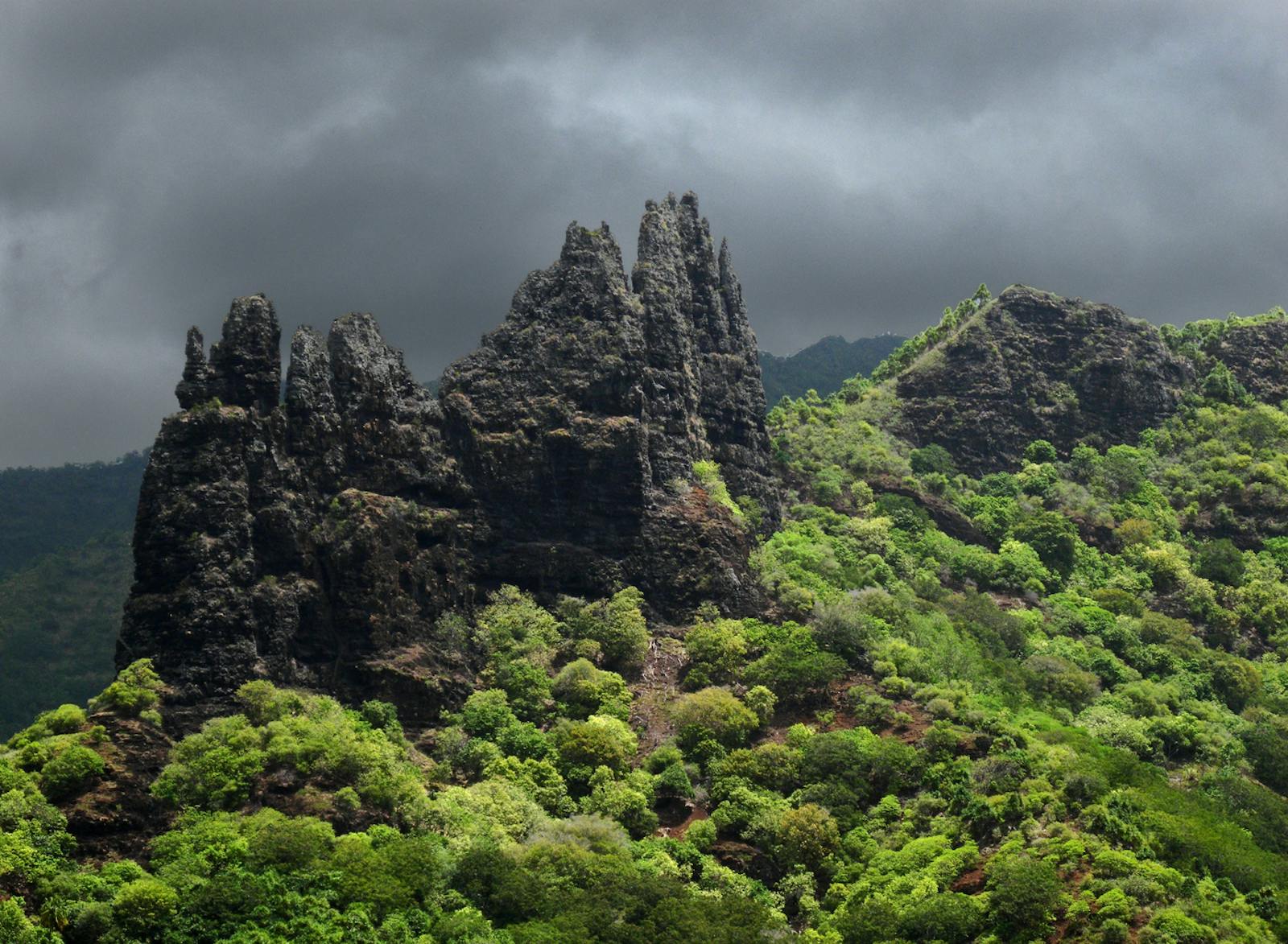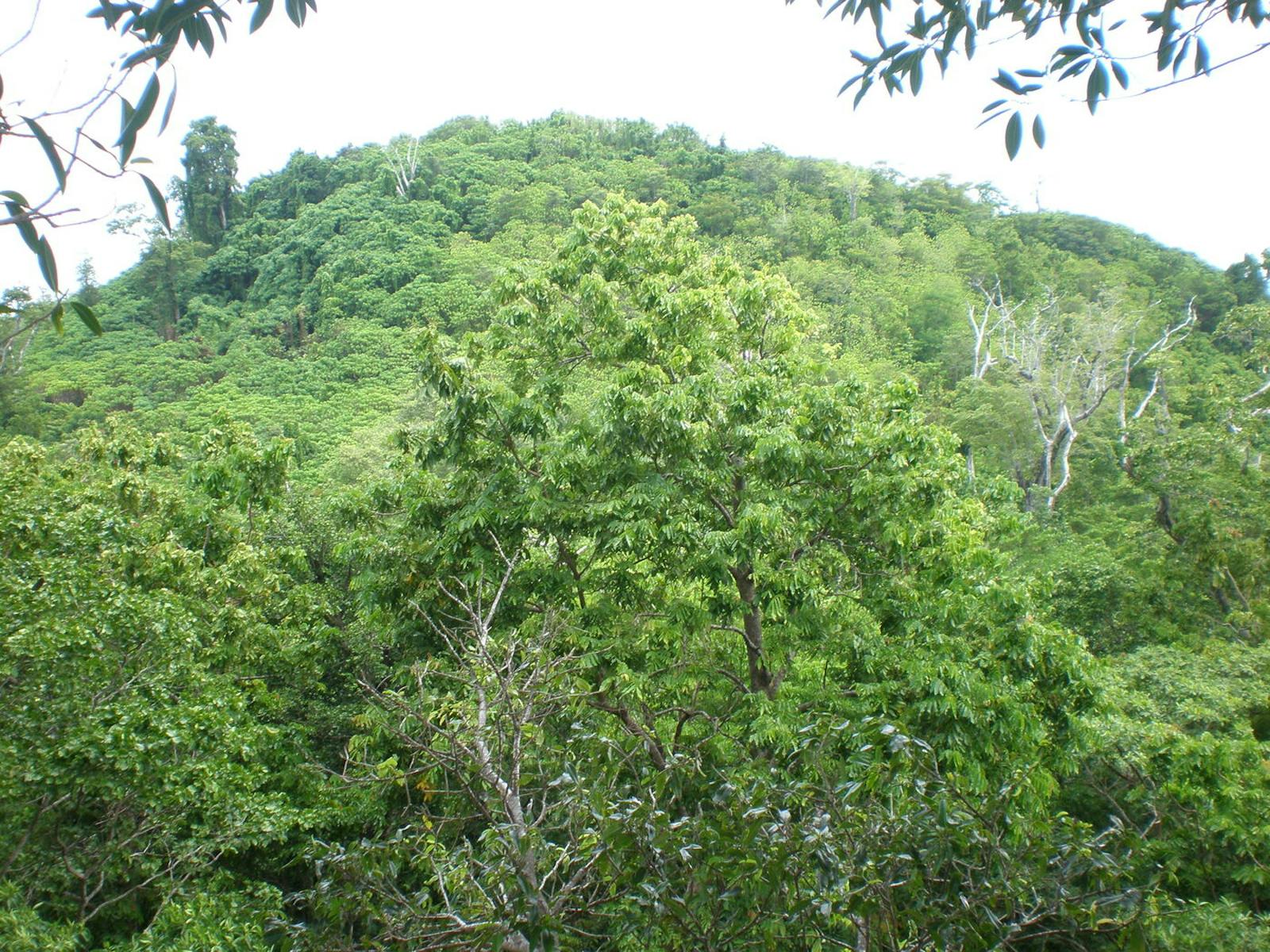Central Polynesian Tropical Moist Forests
The ecoregion’s land area is provided in units of 1,000 hectares. The conservation target is the Global Safety Net (GSN1) area for the given ecoregion. The protection level indicates the percentage of the GSN goal that is currently protected on a scale of 0-10. N/A means data is not available at this time.
Bioregion: Central Polynesian Islands (OC4)
Realm: Oceania
Ecoregion Size (1000 ha):
62
Ecoregion ID:
619
Conservation Target:
15%
Protection Level:
10
States: Kiribati
On Kiritimati atoll, the Bokiboki reed warbler’s head feathers are said to be an aphrodisiac, sequestering testosterone from the weed it feeds on. Octopus are said to climb trees to feed on sweet pandanus fruit on Manihiki atoll. This expansive ecoregion of scattered, classic atolls also has some of the largest seabird nesting colonies in the world.
The ecoregion encompasses the Northern Line Islands, Southern Line Islands, and Northern Cook Islands. Isolated Johnston is also included in this ecoregion. All of the islands are atolls with open or closed lagoons or are raised reef platforms with most land area less than 4 m above sea level. Climate of the islands ranges from continually wet to frequent droughts depending on location in relation to the equator and the tradewind belt.
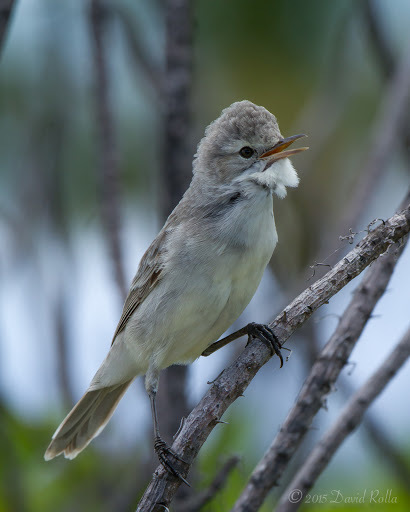
The flagship species of the Central Polynesian Tropical Moist Forests ecoregion is the Bokikokiko reed warbler. Image credit: Creative Commons
Vegetation on larger atolls typically consists of forests with Pisonia grandis (possibly introduced by early Polynesians) with Calophyllum inophyllum, heliotrope (Tournefortia argentea), Pandanus tectorius, Guettarda speciose, and Cordia subcordata (possibly introduced by early Polynesians), and an understory of Morinda citrifolia, Scaevola taccada, Suriana maritime, and Pemphis acidula. Tournefortia argentea woodlands also occur. Tournefortia-Scaevola littoral forest and scrub and Scaevola, Suriana maritima mixed scrublands inland may be present. Lepturus repens grasslands and mixed herblands may occur.
Dry and low islands may support few plant species, usually dominated by grass (Lepturus repens) and Tribulus cistoides or Portulaca lutea, sometimes with areas of T. argentea, P. acidula, and S. taccada scrub. Other habitats often present are inland lagoons, limestone hardpans, dunes, and saline scrublands. The number of indigenous plant species ranges from 2 to 20 on the Line Islands up to 38 on the Northern Cook Islands. There are few endemic plants. For example, Pandanus hermsianus may be unique to Fanning Island.
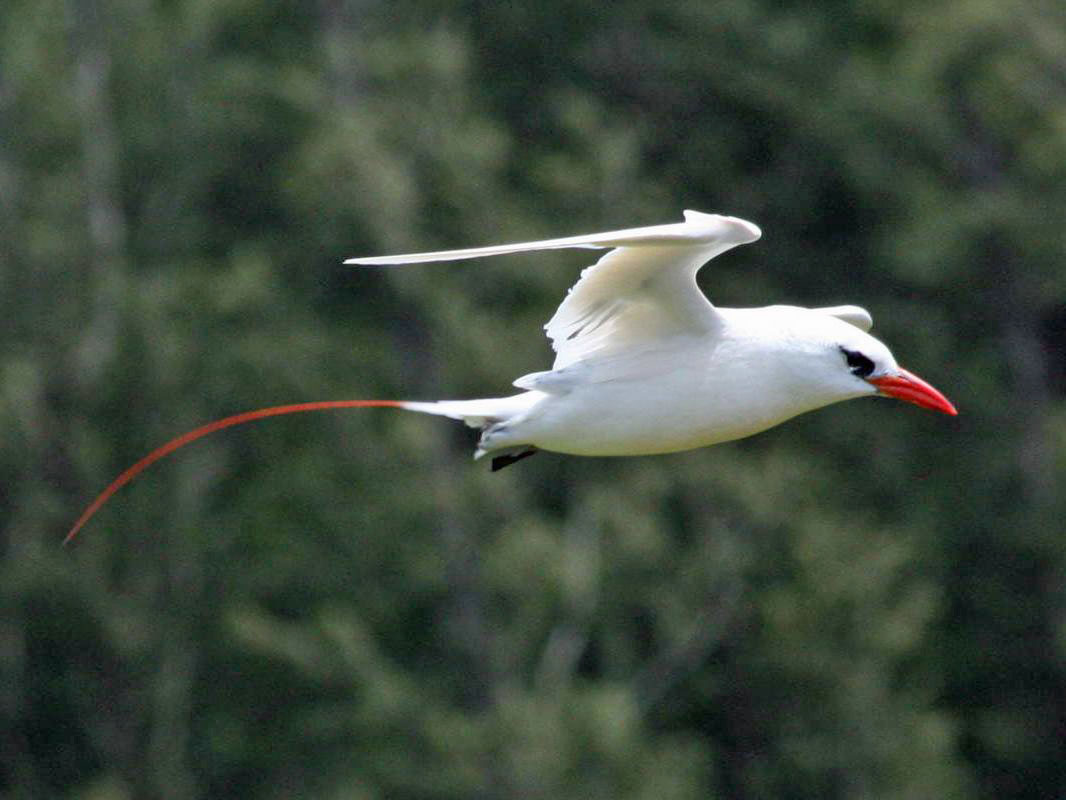
Red-tailed tropicbird. Image credit: Dick Daniels, Creative Commons
The Line Islands are resting and nesting habitat for millions of seabirds and shorebirds. The bokikokiko reed warbler (Acrocephalus aequinoctialis), a small reed-warbler found on Teraina, Tabueran, and Kiritimati is one of only a few land birds in this ecoregion and is endemic. Kuhl’s lorikeet is an endangered parrot, extinct on the Cook Islands, and now only found on Rimatara, Tubuai Islands, and on Kiritimati and Teraina Islands, Kiribati. Teraina Island supports their only substantial population, with more than 1,000 birds. The species may have been moved among islands due to prehistoric trade in red-feathered birds by Polynesians.
Flint Island and Caroline Island have some of the world’s largest populations of the threatened coconut crab. Several widespread geckos and skinks occur on the islands. There are no native land mammals. The freshwater lagoons and bogs on Teraina (Washington) and Flint Islands support freshwater plants and migratory ducks and shorebirds.
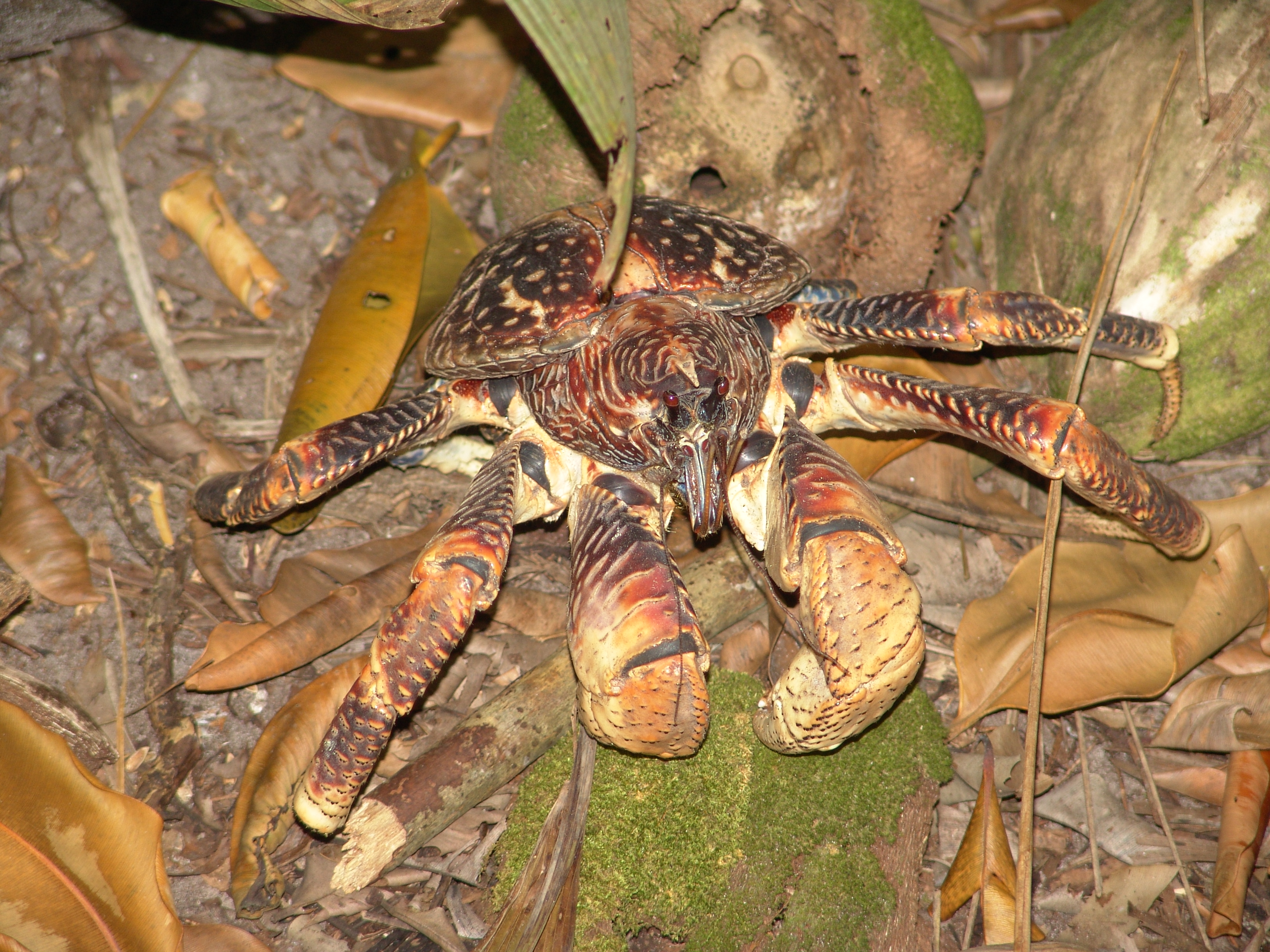
Coconut crab. Image credit: Drew Avery, Creative Commons
Most of the islands have been inhabited and altered by people for thousands of years. Settlement, copra plantations, and guano mining have disturbed much natural vegetation. Vostok and Caroline have relatively natural vegetation and Vostok has low prevalence of alien species. Nuclear testing on several islands has devastated ecosystems. Military infrastructure on Kiritimati, Palmyra, and Johnston Atoll has greatly altered habitats.
Introduced plants, rats, cats, and the yellow crazy ant prey on and outcompete native species, alter communities, and cause population declines or extinction of native species. Rat and cat predations are particularly harmful to nesting seabird populations and are implicated in the extirpation of the Bokikokiko reed warbler from Tabueran Atoll. Malden, Vostok, Starbuck, and parts of Kiritimati have status as a Kiribati Wildlife Sanctuary or Key Wildlife Area. Suwarrow Atoll is a Cook Islands National Park and Palmyra Atoll and Johnston Atoll are US National Wildlife Refuges.
Eight Key Biodiversity Areas have been identified in the Kiribati Line Islands. Rats have been eradicated from Jarvis, Johnston, and Palmyra, and an eradication program is ongoing for Suwarrow Atoll. Cats were eradicated on Jarvis. The yellow crazy ant is being targeted for eradication on several Kiribati Islands and Johnston Atoll.
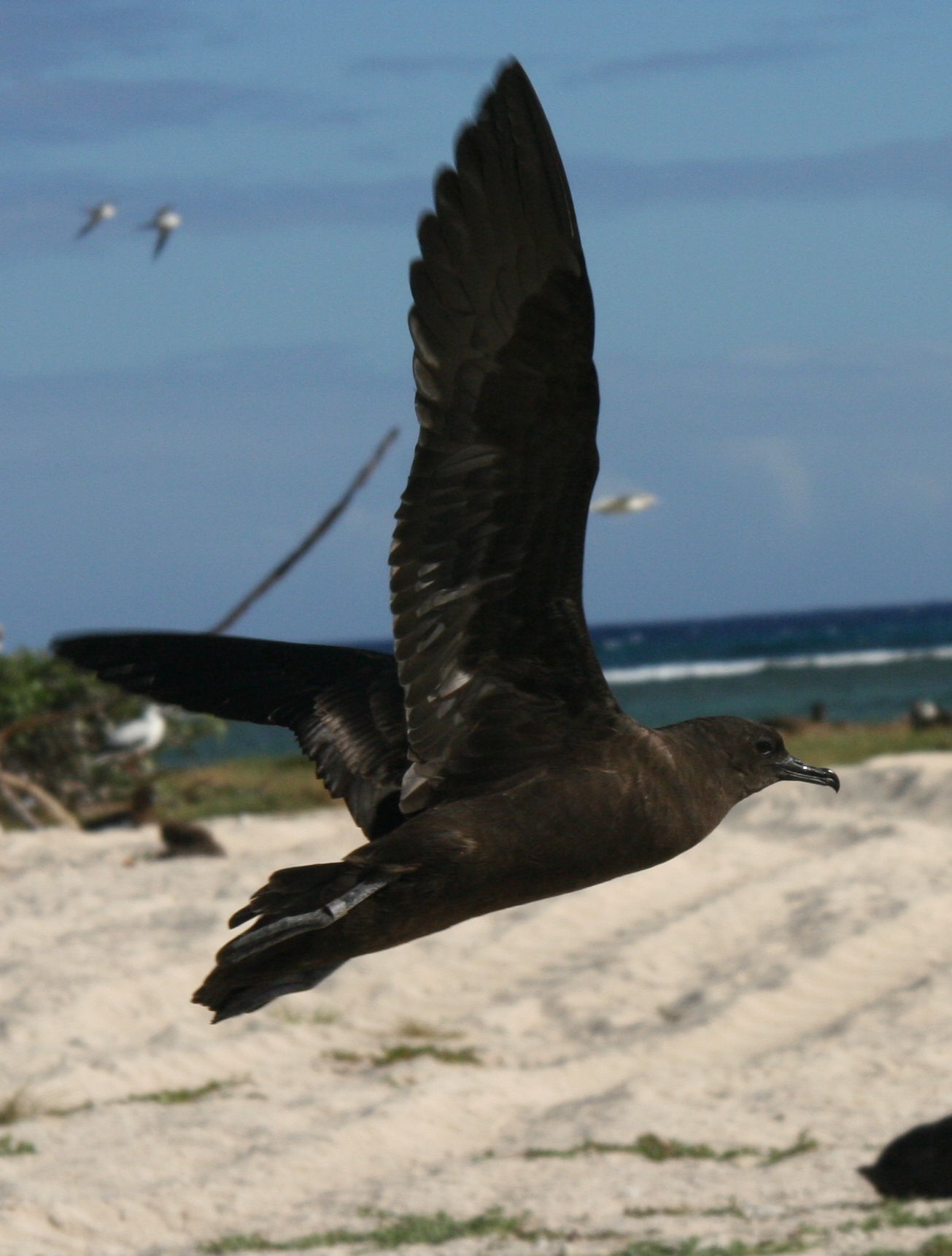
Christmas shearwater. Image credit: Duncan Wright, Creative Commons
The priority conservation actions for the next decade are to: 1) continue to control and eradicate invasive species, such as black rats, feral cats, and yellow crazy ants, on key atolls in the Line Islands and Northern Cook Islands, especially Suwarrow Atoll; 2); strengthen prevention measures to keep little red fire ants off of the islands; and 3) strengthen protection for extensive forests of heliotrope, Cordia subcordata forest, and Pisonia grandis on Caroline Island.
Citations
- Mueller-Dombois D, FR Fosberg. 1998. Vegetation of the Tropical Pacific Islands. Springer Press, New York.
- Passfield K, T Rongo. 2011. Cook Islands 4th National Report to the Convention on Biological Diversity 2011. The National Environment Service, Raratonga.
- van Dijken SG., P Anderson. 2013. Priority Sites for Conservation in Kiribati: Key Biodiversity Areas. Conservation International Pacific Islands Programme, Secretariat of the Pacific Regional Environment Programme, Government of Kiribati Ministry of Environment, Lands, Agriculture Development. Apia, Samoa. 56pp.
